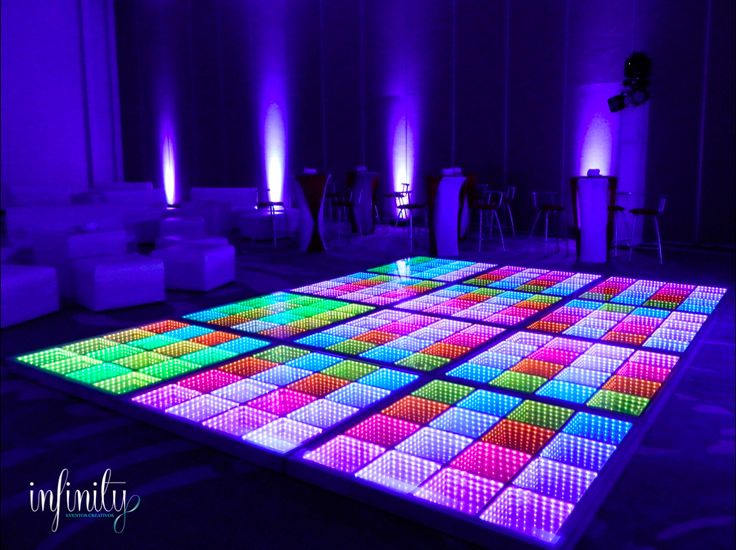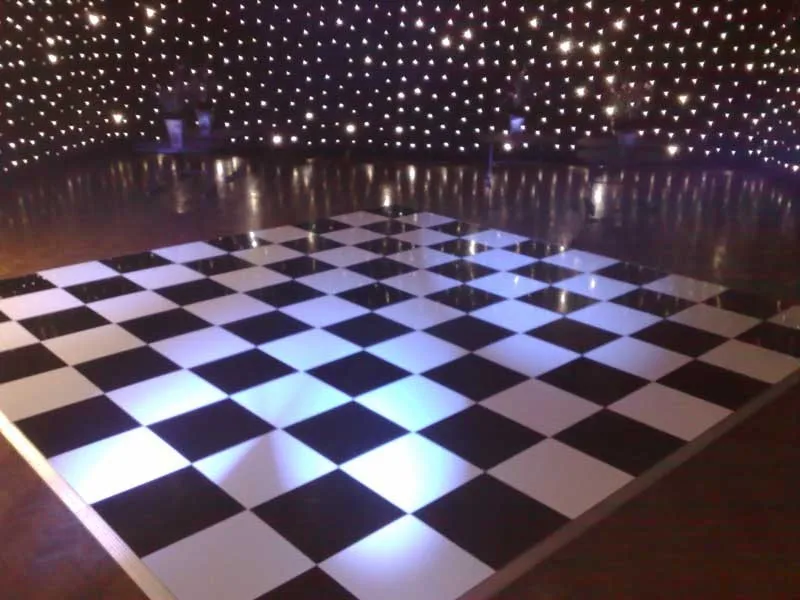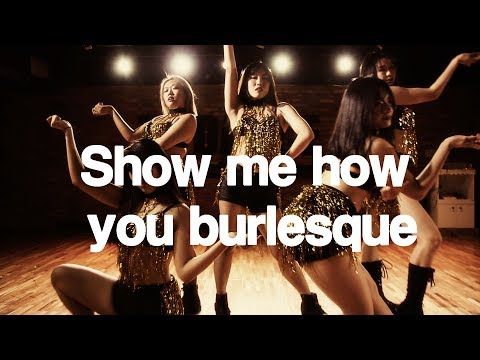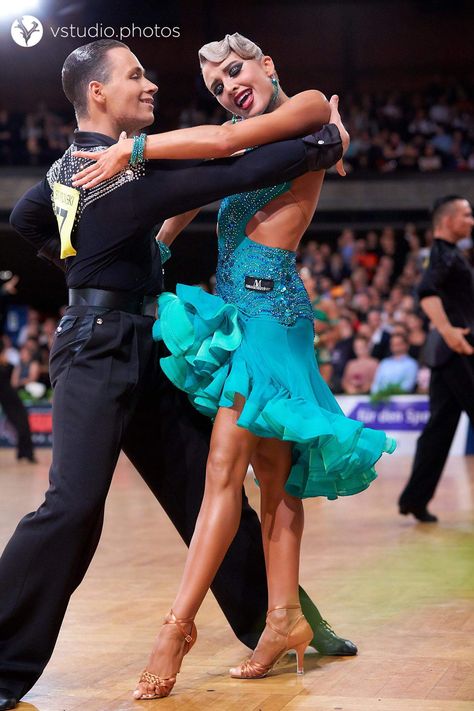How to clean a dance floor
Hardwood Dance Floor Cleaning & Maintenance
These cleaning instructions assume the hardwood dance flooring had a factory finish or a finish added after installation. Unfinished wood dance floors are susceptible to water damage.
Periodic screening or sanding and refinishing hardwood dance floors will probably be necessary every 18 months to 2 years.
Daily Wood Dance Floor Maintenance:
Dry mop before classes with an untreated mop. Check that the temperature in the room is between 65°-85° F and humidity is at 50%. Variations in temperature and humidity can impact wood dance floors causing gapping, cupping and warping.
Weekly Wood Dance Floor Maintenance:
Use a detergent degreaser such as ProClean to mop the dance floor. Do not flood mop and do not rinse.
Dye and scuff marks can be removed with a safe solvent such as Wipe Out Plus. For larger spills like coffee, tea or soda use Simply Gone. Follow the directions on the label or view our maintenance guide for more information.
Removing Aluminum Compound Residue from Hardwood Dance Floors:
There are two recommended ways to clean up this mess. Put an artificial chamois cloth on the bottom of broom and dry mop the hardwood dance floor. The metal shards/dust will stick to the chamois. Rinse and reuse. Another way to pick up the residue is with a wet/dry vac. Coat the wood dance floor with water and immediately vacuum up the residue.
For slippery wood floors try ProClean NS as your basic detergent/degreaser. It contains an ingredient that will create more friction.
For immediate non-slip results use Slip NoMor which lasts up to a week.
Deep Cleaning a Hardwood Dance Floor:
Every six months it’s recommended to deep clean your dance floor using a floor cleaning machine (125 rpm to 225 rpm) with a green (cleaning) or red (scrubbing) pad. ProClean Ultra is recommended. Follow the directions on the bottle or view our maintenance guide for additional instructions.
ProClean Ultra is recommended. Follow the directions on the bottle or view our maintenance guide for additional instructions.
Using a disinfectant is an important part of hardwood dance floor maintenance. Approximately 4 times a year or as needed, use ProClean D Plus which kills bacteria and viruses. Follow instructions on the label or read more about disinfecting your wood dance floor with Proclean D Plus in our maintenance guide.
From time to time check the finish on the dance floor. If it has worn away you will need to refinish. Make sure the finish you use is appropriate for dance. We recommend FloorShield Kit which includes all necessary components to finish or refinish. You may opt for a professional refinisher. Confirm they are using a matte, non-slip product.
If you have any questions about how to properly clean a hardwood dance floor, contact Stagestep at 800.523.0960 for all your floor maintenance needs.
10 Cleaning Tips for Dance Floors: Marley, Tiles, and More
By Sydney Shields
| Fact Checked By: Ashley De Zeeuw
Published: April 29, 2021
Leave a Comment
So many dance numbers require dancing barefoot or performing moves on the ground. So you’ll want your floor to be as clean as possible. But dance floors can get messy quickly, which is why it’s important to know the best cleaning practices and frequency of clean dance floors.
From daily and weekly maintenance to yearly deep cleaning, there’s a lot to learn. This guide will walk you through the best practices for maintaining your dance floors and keeping them clean and sanitized.
Dance Flooring Cleaning Mistakes to Avoid
Before even beginning to clean your dance floors, you’ll want to know the most common mistakes to avoid. Here’s what not to do when cleaning dance floors.
Practices to avoid:
-
- Excessive wet-mopping: Frequently wet-mopping your dance floors can potentially ruin its flexibility and finish over time.
 If your dance floors are being used daily, it’s best to wet-mop them every two to three days, at the most.
If your dance floors are being used daily, it’s best to wet-mop them every two to three days, at the most. - Bleach: Bleach can discolor your flooring, but that’s not all. It also damages your floor’s surface over time.
- Alcohol, ammonia, and acetone: While these three common cleaning materials might be great for other floors, they can do a real number on your dance floor. Using any of these solutions will break down the plasticizer in your floor, causing the floor to become rigid and crack.
- Oil-based cleaning products: Cleaning solutions with an oil base leave a residue on your dance floor and create a slippery surface.
- Excessive wet-mopping: Frequently wet-mopping your dance floors can potentially ruin its flexibility and finish over time.
Best Dance Flooring Cleaners and Tools
It’s important to know what tools are best for cleaning dance floors. From cleaning solutions to brooms, effectively cleaning your dance floor requires a few things.
Dance Floor Maintenance Supplies
Get your routine off to the right start with these recommended supplies.
- Non-abrasive cloth: To gently remove those pesky scuff marks, a non-abrasive rag is a perfect solution.
- Soft-bristled broom: Sweep up the dirt and debris with your desired choice of broom and dustpan.
- All-purpose mops: An all-in-one mop will help you dry mop to pick up all the dirt you can’t see, and wet mop for any stuck-on dirt.
Dance Floor Cleaning Solutions
With all the bare feet and floor work involved in dancing, dance floorings can get greasy and dirty after one rehearsal. The right cleaning solutions will help disinfect and clean your floors.
By using a mild detergent degreaser, you can help your floors look new. The best way to go is to find an all-purpose cleaner that works on a variety of surfaces. This solution should be used weekly on your dance floor.
For when you’re deep cleaning your dance floor, a more heavy-duty floor cleaner will help eliminate all the build-up on your floors and disinfect semi-annually.
Sweeping and Dry Mopping Dance Floors
If you’re in a studio, holding classes and rehearsals every day, cleaning your dance floors daily is essential for keeping your floors looking good.
Therefore, sweeping and dry mopping your floors after every use and at the end of the day will help prevent dirt and oils from building up. If you don’t use your floor every day, practice these cleaning routines after every use.
While sweeping, focus on picking up any crumbs or hair. That way you’re not dragging crumbs around on your floor while you dry mop.
Dry mopping with a non-abrasive or microfiber cloth will pick up the dirt and grease you can’t see. You do not want to wet mop your floors every day, because, over time, that can potentially ruin the flexibility and finish of the floor.
Wet-Mopping Dance Floors
After sweeping daily, it’s time to wet mop. A few times a week, your dance floors should be wet mopped to disinfect and to eliminate oils, sweat, lotions, and other residues.
How often you mop depends on how frequently you use the flooring.
- Moderately used dance floors: If you are using your floor every single day, multiple times a day, you should disinfect your floors two-three times a week by following the manufacturer’s instructions for use, then evenly mopping the entire floor, and letting it dry.
- Lightly used dance floors: For floors only being used a few times a week, use the manufacturer’s recommended mixture of all-purpose cleaner and warm water and evenly mop the floor once weekly.
Deep Cleaning Your Dance Floors
Regularly sweeping and mopping is an awesome way to maintain gorgeous dance floors. However, adding a deep cleaning regimen to your routine about twice a year will help your floors look great for years to come.
To get this done, we recommend you rent out an automatic floor scrubber machine every six months, use your favorite heavy-duty dance floor cleaner, and get your floors in tip-top shape.
How to Remove Scuff Marks From Dance Flooring
When you’re leaping and sliding in hard-sole shoes, scuffs happen. Thankfully, they’re also easy to handle with the right tools.
To remove scuff marks on dance flooring, you can use a non-abrasive cloth or tennis ball to rub the scuff away. If this doesn’t take care of the scuff, use a diluted floor cleaner and cloth and try again. If you need to remove several marks at once, use a microfiber mop to get it done faster.
Cleaning Specific Types of Dance Floors
If you’re in the dance world, you know there are a lot of different types of dance floors out there. To ensure you know the right way to take care of your floor, let’s break it down with cleaning tips for each dance floor type.
Tips for Cleaning Marley Floors
Marley is one of the most popular studio dance floors and is extremely easy to care for because it’s made of long-lasting vinyl.
To clean Marley for daily use, first, sweep away any debris and dry mop it to keep its professional appearance. Then once the floor has been swept, use a damp mop and your desired dance floor cleaner to mop the floor to remove any stuck-on dirt.
Then once the floor has been swept, use a damp mop and your desired dance floor cleaner to mop the floor to remove any stuck-on dirt.
Tips for Cleaning Vinyl Dance Floor Tiles
To clean vinyl dance floor tiles, simply sweep and/or dry mop the floor daily to make sure it stays clean and free of debris. You can damp mop this floor using a common household cleaner and warm water. Just be sure the household cleaner is not oil-based as this can create a slippery surface.
Tips for Cleaning Hardwood Dance Floors
Wood dance floors are the original flooring choice for many dance studios and banquet halls. It takes some special care to keep these floors looking amazing for a long time.
First things first, always sweep your dance floor, then mop with a mild detergent that is not oil-based.
Every month or so, after mopping, treat your floor with a light application of dance floor wax, such as Superior Dance Floor Wax. Use a soft-bristled push broom to evenly spread the wax across the floor and remove any excess.
Use a soft-bristled push broom to evenly spread the wax across the floor and remove any excess.
Conclusion
With all the right tools and cleaning solutions, clean dance floors are easily managed. Be sure to establish a regular cleaning routine to make maintaining your floor effortless.
ORDER FREE SAMPLES Shop All Dance Floors Shop Dance Floor Cleaning Kits
1 Sources
About Sydney Shields
Sydney Shields is a home improvement enthusiast with a passion for writing. Being a huge fan of the DIY revolution, her experience in crafting, blogging, and marketing led her to join Flooring Inc. She takes a personable approach to her blog posts and prides herself on the ability to dive deep into research for a fresh understanding of flooring, and...
View all posts by Sydney Shields
Dance Studio Owner | November 2022
share Tweet share Comments
You may have set a “no drinks” (other than water) rule in your studio, but there are still inevitable spills or street shoes walking through mud that can stain your gorgeous dance floor. So of course you want to clean it up. But how and why?
So of course you want to clean it up. But how and why?
Here you will find the best way to clean and protect your dance floor - and that no to use. With the right care, you can save your floor... and save yourself the hassle of buying a new one!
Nicolas d'August height
You go online and everyone has tips for cleaning the dance floor. But do you listen to everyone except the floor manufacturer? You may encounter unexpected results that may shorten the life of the floor. Or worse, render it unusable.
First, you need to know what you can't use. And I mean never use because you'll be looking for a new floor soon if you do.
Stay away from the three A's.
Never use alcohol, ammonia or acetone to clean your floor. They break down the plasticizer in the floor, and it is this plasticizer that makes the floor pliable. Damage the plasticizer or reduce its amount and your floor will become hard and start to crack.
They break down the plasticizer in the floor, and it is this plasticizer that makes the floor pliable. Damage the plasticizer or reduce its amount and your floor will become hard and start to crack.
Bleach is harmful!
Bleach is another harmful product to use on the dance floor. Bleach not only destroys the color, but also releases the plasticizer to the surface, making the floor slippery.
Vinegar - no no.
Sean o Donnell's age
Unless you are making a salad, never use vinegar on the dance floor as it slowly dissolves your floor.
Avoid household cleaners.
When cleaning the dance floor, stay away from household cleaners and anything that has "oil". These products tend to leave residue on the floor, making it slippery.
Simple is better.
Remember to keep your floors simple. Use only commercially available degreasing detergents such as Stagestep's ProClean. Simple Green can also work in a pinch.
Simple Green can also work in a pinch.
Take care of your dance floor - it's the centerpiece of your studio.
Randy Schwartz, President, Stagestep, Inc.
Category
Dance Studio Owner
Recommended
Mary Padian (Reality TV Star) Biography, Vicki, Career, Net Worth, Instagram, Husband
Life style
Meet American TV Personality Richelle Carey: Biography, Wiki, Net Worth, Career
Relations
Michel Ghisoni | Biography, Age, Parents, Net Worth (2020), Height, Instagram, Dancing |
Career
Adam Silver NBA, salary, net worth, email, Twitter
Life style
Copyright © All rights reserved | likefollow.org
Floors in the club, flooring on the dance floor
- home
- Room types
- Night clubs (dance floors)
Nightclubs and dance floors require a specific type of floor covering that must meet a number of specific properties:
- Mechanical impact resistance . Thousands of people visit this category every day. Dancing or simply active movement of a large number of people can lead to the rapid destruction of the flooring. Thus, the selected type of floor should have increased strength and durability.
- No slip . The slippery surface of the dance floor can lead to injury to club visitors. But it is worth considering that the more rough the coating is used, the more difficult it is to clean it. Thus, when installing floors in a club, a "golden mean" is needed: a smooth surface that prevents slipping.
- Easy to clean . A large and constant number of visitors to a nightclub implies regular cleaning of the establishment. The selected type of floor should be easy to clean, retain a minimum of dust and dirt, and have an antistatic effect.

- Sound absorber . It is one of the most important properties. The floor covering of the dance floor should effectively dampen noise.
- Crack resistance . This kind of damage mainly occurs when exposed to dynamic loads. This requires the use of a material that is resistant to cracking.
Below are the most optimal options for coatings in terms of their technical and operational characteristics, with a guaranteed service life of at least 5 years.
Cost of installing floors in nightclubs
| Cover type | Coating thickness, mm | Cost of work, rub/m 2 . | Cost of materials, rub/m 2 | Total price, rub/m 2 |
|---|---|---|---|---|
| Polyepoxy-3D self-leveling floor | 2-3 | 500 | 2000 | 2500 |
| Polyepoxy self-leveling floor | 2 | 300 | 850 | 1200 |
| Decorative quartz-filled epoxy floor "Poliepoflex" - COLORED SANDS | 3-4 | 450 | 1300 | 1750 |
See all items
Which coating to use?
Catalog of self-produced self-leveling floors
Before deciding on the technology for installing floors in a room, it is necessary to assess the patency of the institution. For nightclubs with very high attendance, highly filled polymer or methyl methacrylate coatings are best suited. In this case, it is better not to use ordinary concrete floors, as they will quickly collapse, and smooth self-leveling floors, on which scratches will appear over time.
For nightclubs with very high attendance, highly filled polymer or methyl methacrylate coatings are best suited. In this case, it is better not to use ordinary concrete floors, as they will quickly collapse, and smooth self-leveling floors, on which scratches will appear over time.
If the traffic is not so high and averages 1000-2000 people per day / evening, the best option would be the installation of concrete floors with a hardened top layer (topping) or polymer bulk coatings. The properties of such systems make them easy to clean and operate, and also allow them to withstand even intense loads.
In addition, polymer self-leveling floors can be made in different thicknesses in different sectors. Directly on the dance floor, you can lay a more durable layer, and a thinner layer on the rest of the territory.
A wide choice of surface textures, as well as an extensive range of colors allow you to choose exactly the type of polymer coating that will harmoniously fit into the design idea of your nightclub.











